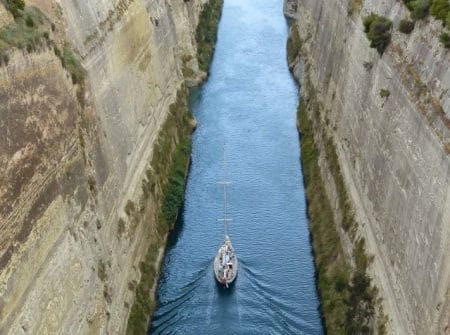Table of Contents
The canal is an artificial waterway constructed to allow the passage of boats or ships inland or to convey water for irrigation, power generation, etc. There are 6 types of canal that are classified based on different factors.
Types of Canal based on Various Factors
There are 6 types of canal-based on various factors.
1. Based on the nature of the supply source
2. Based on functions
3. Based on the type of boundary surface soil
4. Based on the financial output
5. Based on discharge
6. Based on canal alignment
A brief explanation of these types of the canal is given below.
1. Based on the Nature of Supply Source
a. Permanent Canal:
It is a type of canal in which water is accessible throughout the year.
This type of canal is generally run from a permanent source of supply water.
Several Permanent hydraulic structures are built in this type of canal for water distribution and regulation.
A Permanent canal is also known as a perennial canal.
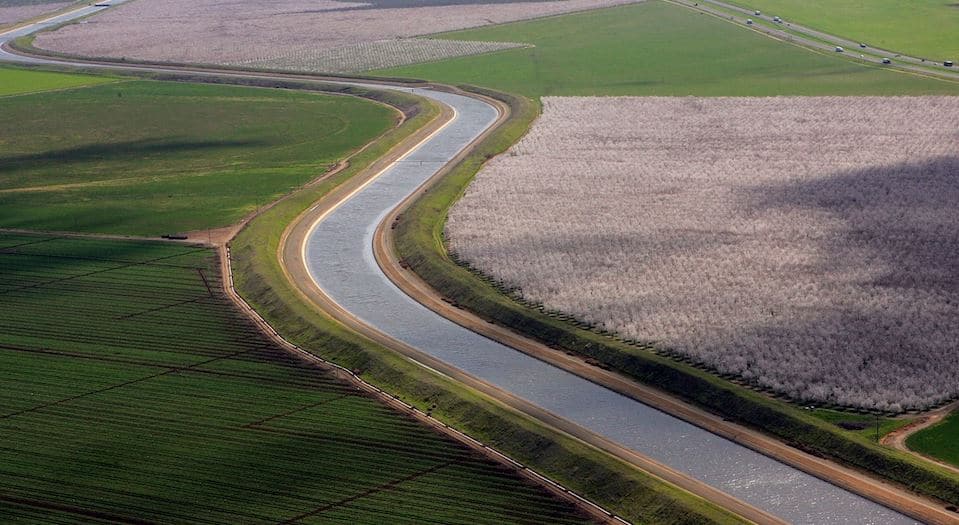
Fig: Permanent Canal
b. Inundation Canal:
It is a type of canal in which water is accessible only during the flood.
These types of canals are carried off from rivers to control the high water level in rivers during flood periods.
A head regulator is provided to regulate the flow of water into the canal.
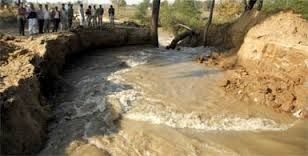
Fig: Inundation Canal
2. Based on Functions of Canal
a. Irrigation canal:
The canal which is used to supply water to the cultivation field for agricultural purposes is called Irrigation Canal.
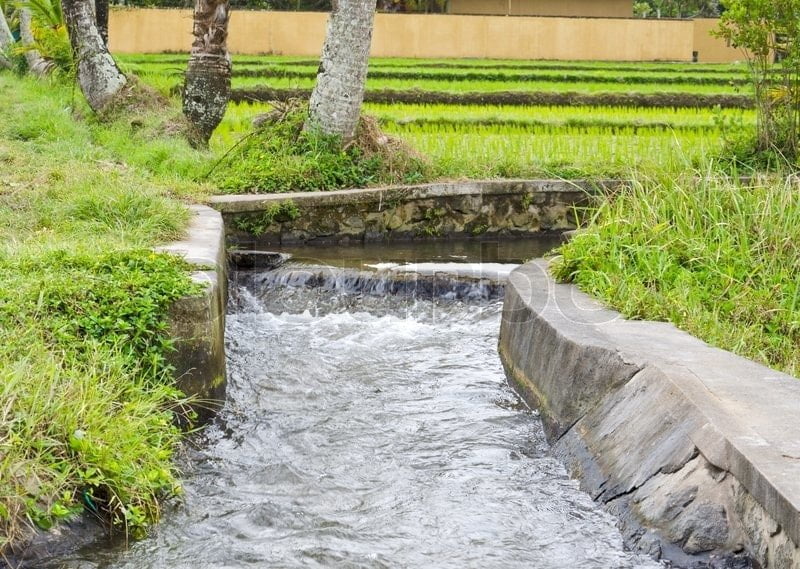
Fig: Irrigation Canal
b. Power canal:
The canal that is used for the generation of hydraulic power is called a power canal.
Hydraulic power is also called hydroelectricity.
Simply these canals are constructed in micro-hydropower projects.

Fig: Power Canal
c. Feeder canal:
A feeder canal is build to supply two or more other canals or branch canals.

Fig: Feeder Canal
d. Carrier canal:
A carrier canal is a multi-purpose canal that consists of the features of both the irrigation canal and feeder canal.
It means that the carrier canal feeds the branch canal as well as provides water for direct irrigation.

Fig: Carrier Canal
e. Navigation canal:
A canal that is built mostly for navigational purposes is known as a navigation canal.
The water level & width required in a navigation canal is usually a lot higher to facilitate the navigation of large boats, ships, etc.

Fig: Navigation Canal
3. Based on Type of Boundary Surface of Canal:
a. Alluvial canal:
If the canal is constructed by digging in alluvial soils such as silt, sand, gravel, etc. then it is called an alluvial canal.

Fig: Alluvial Canal
b. Non-alluvial canal:
If the surface of the canal is non-alluvial soils such as loam, clay, rock, etc. then it is called a non-alluvial canal.
Fig: Non-alluvial Canal
c. Rigid Surface canal:
Rigid surface canals come under non-alluvial canals but the boundary surface of the canal is lined with a hard layer of lining material such as cement, concrete, stones, etc.
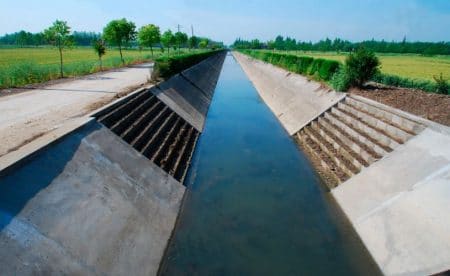
Fig: Rigid-Surface Canal
4. Based on Financial Output
a. Protective Canal:
Protective canals are constructed to save a particular area from the shortage of water.
The main aim of a protective canal is to fulfill the needs of cultivators during the time of famine.

Fig: Protective Canal
b. Productive Canal
Productive canals are those which will produce more revenue for their maintenance and running costs and also to recover the initial investment done on the construction of the canal.
It is good if it recovers 6% or more of its initial investment per annum.

Fig: Productive Canal
5. Based on Discharge

a. Main canal:
Water in the main canal takes off directly from a river or reservoir.
Main Canal feeds the branch canals.
Due to the conveying of more discharge through the main canal, it is not suggested to do direct irrigation from it.
b. Branch Canal:
Water in the branch canal takes off from the main canals at regular intervals.
Branch canals supply water to major and minor distributary canals.
The discharge of the branch canal is usually over 5 m3/sec.
Direct irrigation by branch canal is not suggested unless the discharge through it is not low.
c. Major Distributary Canal:
Water in Major Distributary Canal takes off from the branch canal or in few cases from the main canal.
This canal supply water to the minor distributaries and field channels.
A canal is called to be a major distributary when its discharge lies between 0.25 to 5 m3/sec.
d. Minor Distributary Canal:
Water in Minor Distributary Canal takes off from major distributaries and directly from branch canals depending upon the discharge of canals.
Their discharge is usually below 0.25 m3/sec. These canals provide water to the field channels.
e. Field Channels:
Field channels are small water channels that are excavated by cultivators in the irrigation field.
It is also called watercourses.
These channels are feed by the distributary canals and branch canals through canal outlets.
6. Based on Canal Alignment
a. Ridge Canal:
The canal that is aligned along the ridgeline or watershed line of an area is called the ridge canal or watershed canal.
Since this canal lies at a high altitude, irrigation on both sides of the canal is possible.
It is also possible to irrigate a larger area.
There is an absence of interception of natural drains on ridgelines due to which there is no requirement of cross drainage work.

Fig: Ridge Canal
b. Contour Canal:
A canal that is aligned roughly parallel to the contours of the area is known as the contour canal.
This type of canal can be observed in hilly regions.
Irrigation is only possible in a single direction only. It has to pass the drainage for which there should be the provision of cross drainage works.

Fig: Contour Canal
c. Side-slope Canal:
A canal that is aligned nearly perpendicular to the contour of the area is called a side-slope canal.
It is situated exactly in between ridgeline and valley line.
It is parallel to the natural drainage line and hence no cross drainage works are needed.
The bed slope of this canal is steep.
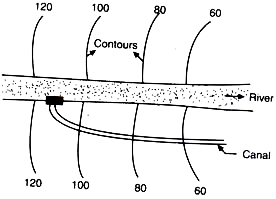
Fig: Sode Slope Canal
| Read More: Types of Surveying |
| Read More: Canal Losses |


